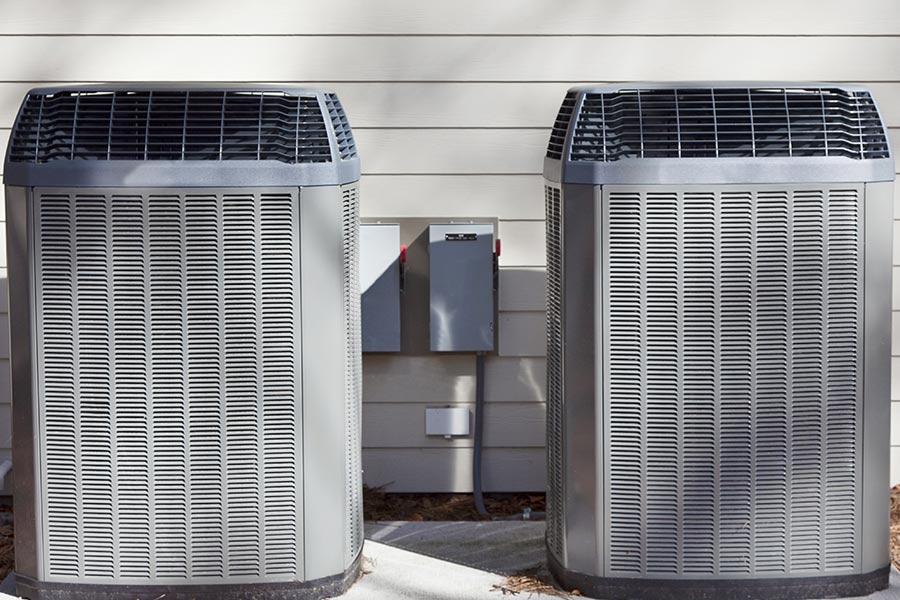Do you wonder about the “EM heat” setting on your thermostat? It stands for emergency heat on HVAC systems, such as heat pumps. People often think it adds extra warmth to their property on extra-cold days, but that’s a misconception.
SM Mechanical Services is a premier provider of emergency HVAC services in East Hampton, CT. If you want to learn more about HVAC emergency heat functions, continue reading our post below.
Standard and Emergency Heat Explained for East Hampton Residents
If you use a heat pump instead of a traditional furnace in your East Hampton residence, your HVAC system transfers warmth instead of generating it. The equipment runs on electricity by drawing warmth from outdoor air and moving it indoors.
Although these residential heating systems work best in areas with mild climates, they sometimes need supplementary sources to warm spaces on blisteringly cold days. That’s emergency heat on HVAC systems. They could be furnaces that run on fossil fuels like oil and natural gas, hot water systems, or electric heater coils.
How the Emergency Heat Setting on Thermostats Works
The primary heater is an outdoor unit, while the auxiliary system is indoors. The secondary unit turns on when temperatures outside get too low for the primary one to work properly.
One reason heat pumps don’t work as well as furnaces when temperatures fall below freezing is frost buildup. Frost can accumulate on the equipment’s coils when temperatures drop that low.
Thankfully, these units have defrost settings. They will temporarily shut down when they detect ice to let the coils thaw naturally. Operating HVAC systems with frozen coils can cause significant damage, so the defrost setting is essential for performance and longevity.
The problem with the defrost mode is that the equipment won’t transfer warmth until the frost is gone. That’s where the secondary heater comes in. The EM heater turns on, ensuring your East Hampton property stays warm and cozy until the pump can resume operations.
When HVAC Emergency Heat Mode Turns On
Emergency heat activation is usually automatic. After the thermostat triggers the emergency heat on HVAC units, primary heaters stop working.
Depending on your thermostat, it may include programming to activate the auxiliary heater once outdoor temperatures reach a certain threshold. The average threshold for many East Hampton properties is between 35 and 25 degrees or lower. At those temperatures, a heat pump would be unable to draw enough warmth from outside to bring indoors.
Usually, thermostats have a red light or another noticeable display to indicate when the EM heater is active. Although EM and auxiliary heaters are the same, the latter involves automatic engagement from the thermostat. With an emergency heater, you can manually activate the system when necessary and turn it off when you no longer need it.
Should You Use EM Heat for Cold Days?
You could manually turn on EM heat despite automatic thermostat settings and programming. As such, you might wonder if you should use this setting when temperatures drop outside and you want your East Hampton home to feel extra cozy. The answer is no.
Emergency heat on HVAC systems is for emergencies, as the name suggests. You could turn it on to add more warmth to your home. However, using the supplemental heater when unnecessary will raise your utility bills.
By engaging that thermostat setting, you’re stopping your energy-efficient heat pump from working and turning on a unit that consumes more energy. That’s why it’s best to let your thermostat activate the auxiliary heater according to its settings. For heating emergencies, it is acceptable to use an EM heater.
What’s a Heating Emergency?
Heating emergencies may include the following:
- Ice on the HVAC system’s coils that won’t thaw out
- Damage to the primary heater
- A lack of warmth from the primary heater due to wear and tear or damage
If your main unit isn’t functional, you could temporarily turn on your supplemental heater manually. To avoid costly expenses from running that system, contact a local HVAC contractor immediately to resolve your heating issue.
Contact Our Professionals To Resolve Your Heating System Problems in East Hampton
Whether you need emergency heat troubleshooting help or heating repairs, count on SM Mechanical Services to provide the care you need. Our fully licensed and insured HVAC technicians have over 15 years of experience installing, repairing, and maintaining HVAC systems in East Hampton, CT, and the neighboring areas.
We’re the experts to call if you need help understanding home heating mistakes or emergency heat on HVAC units. Schedule an appointment with SM Mechanical Services today!

